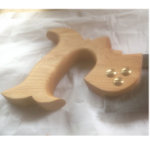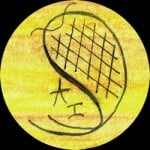Having trouble chopping bench mortises
Welcome! / Forums / General Woodworking Discussions / Having trouble chopping bench mortises
Tagged: bench, frustration, mortise
- This topic has 37 replies, 6 voices, and was last updated 10 years, 8 months ago by
 John Purser.
John Purser.
-
AuthorPosts
-
 12 November 2013 at 5:55 pm #21337
12 November 2013 at 5:55 pm #21337Can wood be too soft to cut a decent mortise with Paul’s method?
I’ve been working on my work bench since last June! One problem after another mostly caused by the steep learning curve I faced. I haven’t done much woodwork in my life that couldn’t be handled by a 22 oz framing hammer or a double bitted axe.
So I’ve accepted the blame, learned the lesson, changed plans where necessary, started over, and kept making progress. I’m not “pleased” at all but I’m getting a lot of satisfaction if you take my meaning.
Now, I may have hit a situation that is a little different. When I chopped my first bench leg mortise it was a disaster! I chopped another and it was nearly as bad. I tried the next leg and while the results were somewhat better and my control was definitely improving it was still something I wasn’t going to put on my bench. So I took the time to just chop mortises. In the end I had 7 mortises chopped with the last three looking quite acceptable!
So I glued up and planed out a new set of legs, carefully did my layout, chopped a mortice, and I think my chickens could have cut a cleaner hole. The sides are too wide, the ends are bowed out, and the sides of the interior has a big hole ripped out of it. I was tearing my hair out and then I turned the leg over and compared my hole on one side to the other. One side is fairly crisp, the sides are pretty smooth, no big tear outs on the inside of the board on that side. But the other laminated board is just a disaster.
The one that’s torn up has very wide rings and seems to be a much lighter, softer wood. There is well over 3/8 of an inch between dark rings on that board. My last practice holes that I thought were good enough were in fact in some of the hardest wood I’ve worked with. This is “whitewood” or “SPF” from the local Home Depot where the pickings are pretty slim. In straight boards I can choose between ones covered in knots or clear wood I can crease with my thumbnail they’re so soft. My last trip there I culled 80 boards (actual count) to get the 5 studs I needed for my cross pieces.
So what do you think? Reasonable hypothesis or am I reaching WAY out there to make excuses for myself? I got my big boy pants on, I can take it.
 12 November 2013 at 7:07 pm #21341
12 November 2013 at 7:07 pm #21341Wood can be challenging harder woods you can give a bit more of a thump.
On soft pine try to be a bit gentler.
Less is more comes to mind and you will also have more control.
You can afford do go about a 1/64″ in front of your knife Wall chisel will compress fibers back to knife wall.
Be patient keep practiceing get a feel for wood you are using.
Good luck 12 November 2013 at 8:23 pm #21346
12 November 2013 at 8:23 pm #213461/64th of an inch??? If the bevel comes within a 1/4 inch I’m wiping out my knife wall and that’s BEFORE I pry. On this piece it compressed well over 1/4 of an inch ahead of the bevel.
One of the lessons I learned on my practice mortise holes was to not hit too hard. I thought I had backed off fairly well but maybe I still need to hit it easier. This leg is probably ruined already so I’ll do some experimenting when I get my shop space back again.
John
John, if I’m reading this right, you say the bevel is next to the knife wall. You will find putting the flat back of the chisel facing the knife wall a much better way. I would watch Paul chopping out a mortice again and again.
Sorry if I have picked this up wrong
Ken 😉
 12 November 2013 at 8:54 pm #21350
12 November 2013 at 8:54 pm #21350Think you may of miss understood me John.
The back of the chisel gose to the knife wall just in front of knife wall by 1/64″.Once you have defined the wall you can hit chisel a little harder.
When you lever out the waste try not to bruise the knife wall you have defined use a smaller chisel.
 12 November 2013 at 9:28 pm #21355
12 November 2013 at 9:28 pm #21355Ken and Mark, not entirely. That is it is what I thought Mark was saying but it’s not what I’m doing. Paul could get his bevel right up to the knife wall and the bevel would move the chisel back but I know I can’t come anywhere CLOSE to the knife wall with the bevel.
Something else I noticed on my practice mortise holes, when Paul drove the chisel in going forward the bevel would drive the chisel back towards him. For me that only happened consistently on one leg, the last one that I cut the acceptable practice mortises in. Most of the time that chisel is going pretty much straight down unless I’m just taking off a sliver (well under 1/8) of wood.
In the mid section of the mortise hole where I’m levering a bit the wood on the bevel side is dented enough to tear the sides some and the dent extends around a half inch ahead of the hole.
And I’m no gorilla. In fact I’m disabled, have some strength problems with my hands, and am concerned about bending chisels I can’t afford to replace. I don’t want to give the impression I’m a neanderthal working with a crowbar here.
I’ve got a couple of 4X4s in the garage that I think are Douglas fir instead of the SPF and they’re a lot harder. When I get my workspace back (putting in sump pumps today) I’ll try cutting mortise holes in them to see if they come out cleaner.
It still winds up being my fault if it’s softer wood. That means I’m not adapting to the material.
 12 November 2013 at 9:44 pm #21358
12 November 2013 at 9:44 pm #21358Oh I hardly expect Sellers’ results when I use Sellers’ methods. And practice I do. It was just so frustrating to lose nearly everything I thought I’d gained from practice. I was certain I had figured out what I was doing wrong and could proceed with some confidence.
Thanks for the help. I’m not done. Just checking to see if I’m missing something obvious.
 12 November 2013 at 9:59 pm #21362
12 November 2013 at 9:59 pm #21362Softer wood needs a razor sharp chisel and smaller bites. You want the chisel to slice the wood not tear through it. If the chisel is not riding the bevel through the wood you either have not cleared enough wood so that it has room to do so or you are taking too big of a bite. Try cutting a mortise with a freshly sharpened chisel and small bites. Concentrate on the sound as you chop. The sound is the key. When you hear the sound change to a dull thud stop hitting. Before you start to pry, push/pull the chisel slightly in the opposite direction to ensure that the fibers are free then pry the waste wood out. That little rocking motion of the chisel just before you pry can make all the difference in the world.
Post some picks if you can and lets see if we can get it worked out. 12 November 2013 at 10:06 pm #21365
12 November 2013 at 10:06 pm #21365John just a suggestion try some smaller timber say 2″x2″ you will only go an inch from either side just for practice. Help you with your technic. Chomping through 4″ inches is quite a lot of work and a lot more waste of timber just for practice .
I do my mortise a bit different to Paul’s method I always keep my chisel perpendicular and work one end to the other 3/16″- 1/8″or so from knife wall turn chisel around and do the other knife wall. Then get a small chisel and remove waste. Then repeat from original end continue as above until you reach about half way. Then start from other side . That’s the way I was taught.
I know why Paul puts his bevel of his chisel in perpendicular at least I think I do. The chisel will cut through the previous cut and should be easier to remove waste or lever out.
I could be wrong but that is the way I think it works. 12 November 2013 at 10:36 pm #21367
12 November 2013 at 10:36 pm #21367I also prefer to use a firmer or mortise chisel you get less twist and cut side of mortise a bit neater than you get with bevel edge chisel . A bevel edge chisel works fine just a little harder to control in my opinion.
 12 November 2013 at 10:47 pm #21368
12 November 2013 at 10:47 pm #21368I could swear someone posted this before (Ken?) but I couldn’t find it so here it is again….
-
AuthorPosts
- You must be logged in to reply to this topic.
